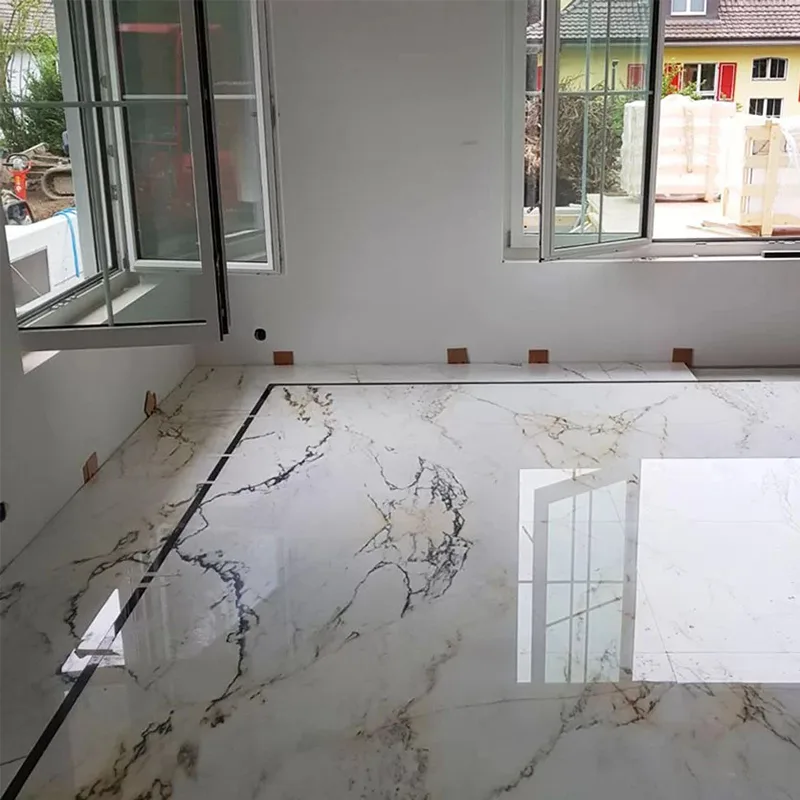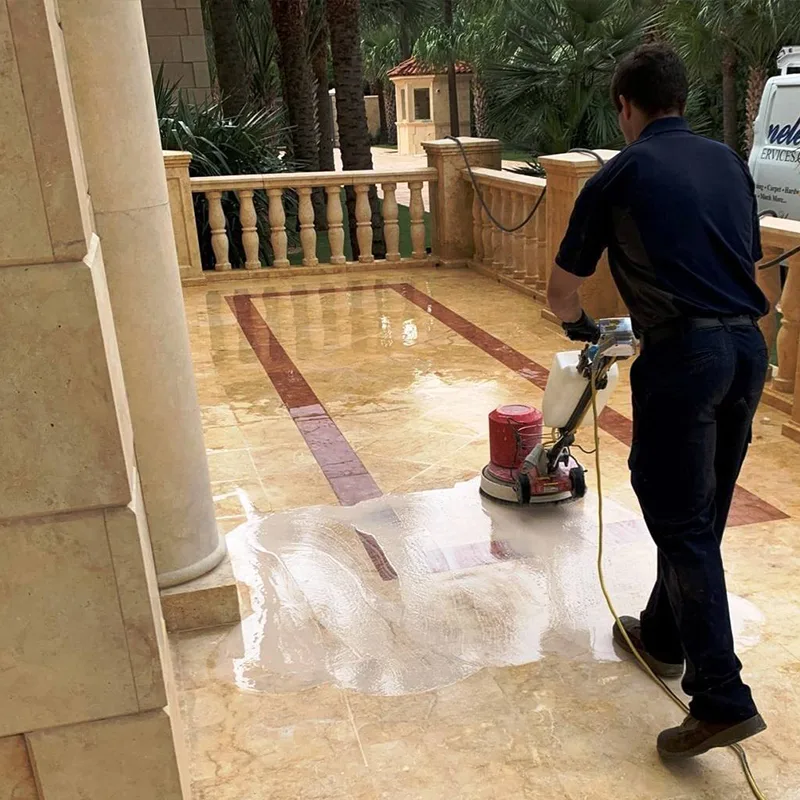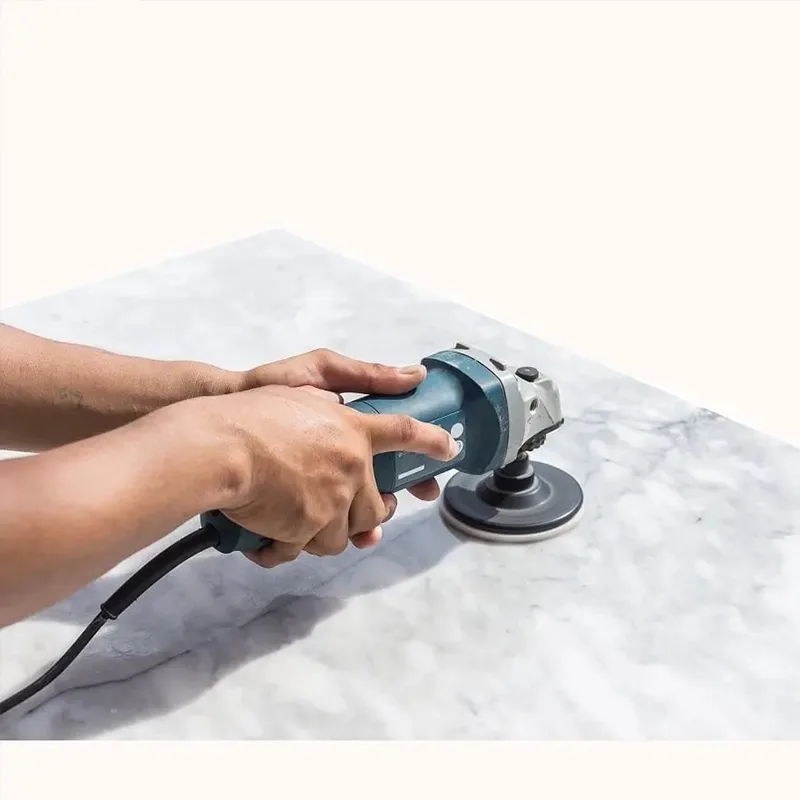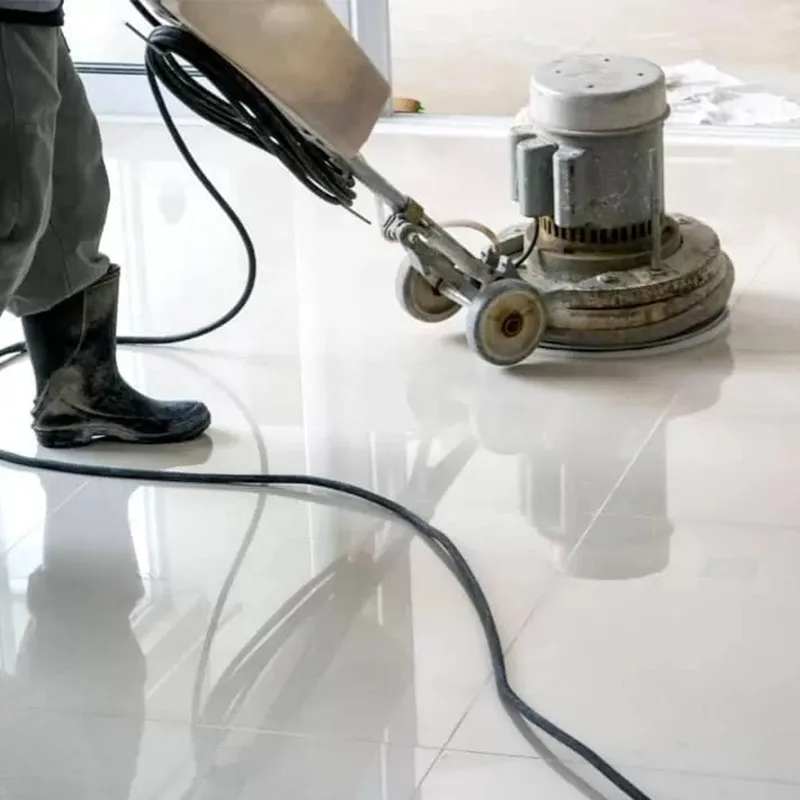Marble Polishing
Marble polishing is a meticulous and specialized service designed to rejuvenate and elevate the inherent splendor of marble surfaces. This intricate process is dedicated to the meticulous removal of imperfections such as scratches, stubborn stains, and the dulling effects that may have accumulated over time on the marble surface. The primary objective is to unveil the natural brilliance of the marble, culminating in a refined and glossy finish that accentuates the stone’s unique patterns and colors.
The restoration journey commences with a comprehensive assessment of the marble surface. This step is crucial for understanding the specific challenges and conditions that need to be addressed during the polishing process.
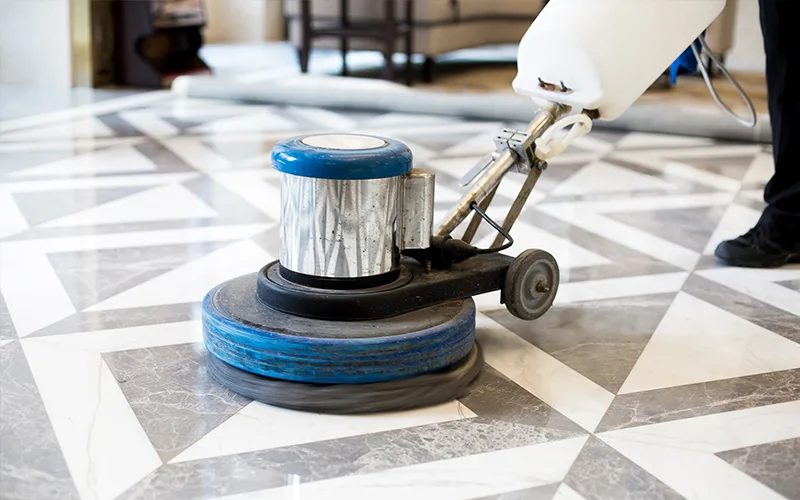
Surface Inspection
Before initiating the polishing process, professionals conduct a thorough inspection of the marble surface to assess its condition and identify any specific issues that need attention.
Cleaning and Preparation
The marble surface is cleaned to remove dirt, grime, and any existing coatings. Proper cleaning ensures that the polishing compounds adhere effectively to the surface.
Grinding and Honing
If there are deep scratches or uneven surfaces, grinding and honing may be performed to level the marble. This step is crucial for achieving a flawless finish.
Polishing Compounds
Specialized polishing compounds are applied to the marble surface. These compounds vary in abrasiveness, and professionals choose them based on the marble’s type and condition.
Machine Polishing
High-quality polishing machines equipped with diamond-embedded abrasive pads are used to buff and polish the marble. This process gradually restores the shine and smoothness of the surface.
Sealing
After polishing, a sealant is often applied to protect the marble from future stains and damage. This step enhances the longevity of the polished finish.
Final Inspection
The polished surface undergoes a final inspection to ensure that the desired level of shine and clarity has been achieved. Any remaining imperfections are addressed during this stage.
Maintenance Tips
Professionals may provide clients with recommendations for maintaining the polished marble, including proper cleaning techniques and the use of suitable sealants to preserve the finish over time.
Marble Polishing Work Gallery
FAQ
Why is marble polishing necessary?
Marble polishing is essential to restore the natural shine and beauty of marble surfaces. Over time, marble can develop scratches, stains, and a dull appearance, and polishing helps eliminate these imperfections.
Can I polish marble surfaces on my own?
While there are DIY marble polishing kits available, professional expertise is often recommended to ensure proper techniques, avoid damage, and achieve the best results. DIY attempts may lead to uneven polishing or unintentional damage.
Is marble polishing suitable for all types of marble?
The suitability of marble polishing depends on the type of marble and its condition. Professional assessment is recommended to determine the appropriate polishing approach for specific marble varieties.
How often should I polish my marble surfaces?
The frequency of marble polishing depends on factors such as usage, foot traffic, and the type of marble. Generally, it's recommended to polish high-traffic areas annually and less frequently for lower-traffic areas.
What types of imperfections can marble polishing address?
Marble polishing can effectively address scratches, stains, water spots, etch marks, and general wear and tear. The process is designed to restore the surface to its original luster.
How long does the marble polishing process take?
The duration of marble polishing varies based on factors like the size of the area, the extent of damage, and the specific polishing techniques employed. On average, it may take a day or more for larger projects.

